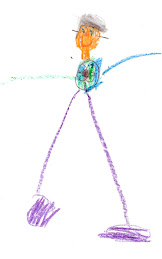A lump of coal seems to be a pretty unusual Christmas gift.
I suspect, however, to the starving people struggling through the Irish Potato
Famine, it might not have been quite as useless as it is in our day and age.
We’ve gotten used to getting kitchen appliances, tools, and
snow shovels for Christmas. Sometimes those are our favorite gifts.
But there are some people who carry the “I-don’t-know-what-to-get-you”
thing farther than others. My Cousin Joy’s son, Evan, is one of them. For years now he
has given her exceptionally unusual gifts, at no small expense either. The
first one was a “Leg Lamp” like the one seen in the movie, “The Christmas
Story.”
One year it was a fully operational slot machine. It was a
massive thing and sat in her basement for a couple of years until she finally
found someone to take it off her hands. The smaller family members enjoyed
playing with it…for a little while.
This year he planned to give her a real shrunken head. Yes,
you read that right. But then he forgot to get a favorite friend a gift, so he
gave it to the friend, and Joy doesn’t have to figure out what to do with it.
But the best of his unusual gifts was a fully articulated
human skeleton (plastic, we hope).
He brought it home where he and his brothers tried to think
of a really unusual way to give it to Joy. They all remembered that her mother
was a heavy smoker who always smoked Raleigh cigarettes, so they decided to set
the skeleton up in the driver's seat of Joy’s car, and have her smoking a Raleigh with a long ash on
it.
The next problem was to get Joy to go outside to find the
skeleton. It took them quite awhile, but finally they convinced her that she
needed something in the garage. She went out, got whatever it was, and came
back in, never seeing the skeleton at all. Eventually they got her to really
look, and the fun began.
There was a woman in town who was really skinny. Her name was
Marilyn, so Marilyn became the name of the skeleton.
Joy likes a good laugh as well as anyone, and she set about
entertaining Marilyn in every way she could find. She took her to coffee in the
morning. She took her to the bar where they propped Marilyn up on a bar stool.
She even took Marilyn to a dance where Marilyn sat in with the band and had no
shortage of real live beaus to take her on to the dance floor.
The next Christmas Joy’s family came up with another idea.
They used a rocking chair as a sleigh and a reindeer made
of a saw horse (with a real deer head attached). These they mounted to Joy’s
roof and aimed a spotlight on it. And Marilyn, dressed in a Santa suit,
brought Christmas joy to everyone.
Unusual Christmas gifts that bring so much laughter are rare
and wonderful.





